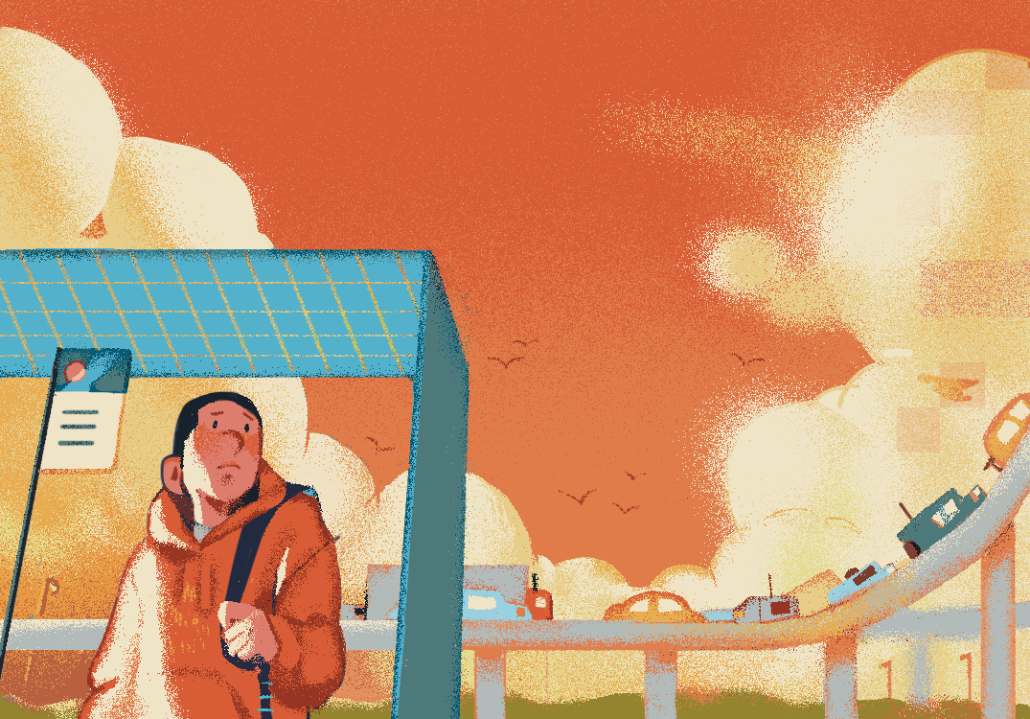Many view L.A. from the confines of the campus bubble

Living in Los Angeles without a car makes life a million times more difficult — day to day, socially and professionally. But the financial responsibility of a car is not feasible for low-income and out-of-state students, thus creating unequal opportunities in how students are able to “make the most” out of their college experience at USC.
Nobody walks in L.A. The Missing Persons said it in 1982, but it still remains true. On and around campus, students are able to rely on the University’s extremely popular Free Lyft program, (colloquially known as “Fryft”) to get around the USC area from 6 p.m. to 2 a.m. (as long as it isn’t Game Day, when the program is delayed to five hours after kickoff). But for students who need transportation beyond these limited nighttime hours and outside of University Park, trying to figure out how to get from A to B can result in some major Ls.
The students and alumni who often complain about the USC bubble — that despite USC’s location in downtown L.A., students don’t get out and really explore the city — understand that the City of Angeles is so much more vast, diverse and cultured than just University Park, but with a lack of reliable transportation, many miss out on all that is beautiful about the city.
Public transportation is a great resource to get around, but not in L.A. Unlike other major cities, the public transportation system in this city is inaccessible and oftentimes a deterrent for students wanting to explore outside of campus. The buses are inconsistent, and many students feel unsafe riding alone and/or at night. Rental cars are unavailable for students under 25 with few places adding on a fee for those that don’t meet the age requirement, and Zipcar, a popular and affordable car share program, only has a couple of locations near campus, making it difficult for students to utilize this service.
It comes down to a lack of independence, reliability and convenience. Having to depend on the Fryft program, public transportation and generous friends to get around greatly hinders how students are able to spend their time. What could be a 20-minute car ride turns into an hour-long bus ride, (that is, if the bus comes on time, or comes at all), or a five-minute car ride turns into a 45-minute walk. And, as busy college students, time is always a resource that needs to be spent extremely wisely in order to prioritize classes, homework, clubs and “adulting.” Figuring out time management is definitely a great struggle for many students and finding the will and free time to leave campus, especially without a car, just doesn’t make sense for many students who are booked and busy. With plenty to do on and around campus, why would they want to leave?
Staying solely in University Park might be fine for the unadventurous and the anxious, but with the freedom of college comes a great deal of personal discovery. Our school is in L.A., one of the most exciting places in the country. Every day, there are great movies and art exhibitions showing, fantastic comedians and musicians playing, flea markets brimming with exquisite finds, and a wealth of culture and opportunities — but students without a car are far less likely to be able to take advantage of these opportunities.
Being without a car doesn’t just hinder freedom for recreational purposes but also practically and professionally. A study by the University of North Carolina at Chapel Hill and UnidosUS stated, “Transportation is often the single thread holding together a precarious balancing act that allows the student to attend school while juggling multiple other responsibilities. Because transportation cuts across responsibilities related to work, school, and home, when that thread is broken, everything can unravel.”
For students in the School of Cinematic Arts or the Roski School of Art and Design, transporting big bulky canvases or 50-lb camera equipment generates stress and back pain for those without a car. Many internships say, point blank, not to apply if you don’t have a car. These companies want someone with reliable transportation, someone who is able to run errands and show up on time every day, but by excluding the car-less population they are actively participating in classism. Not to mention, cars are incredibly expensive, especially in L.A. where gas prices are criminal and parking is a privilege for those with spare time and money.
I’m not going to posit any solution or call to action, because the solution is better public transportation in L.A., a solution that would take many years, a lot of money and a capable and caring government — much more than one silly girl’s silly op-ed. This solution is one that the locals, commuters and working-class people of L.A. have been asking for for years and years, despite falling on deaf ears of an indifferent government.
However, looking at the University, one can hope there is more they can do outside of a two-mile radius Fryft zone that does not even reach the edge of downtown L.A. with the large budget the University possesses. Let’s help students explore a bit further than the confines of USC gentrified hot spots. Whether that be with an increased number of Zipcars at a lower price, bus and metro passes for undergraduates or even expanding the Fryft zone to reach, at least, the Fashion District — every small change expands opportunities for students to explore L.A. I mean, how else are we to truly fulfill the University mission statement of “enriching our minds and spirit?”

